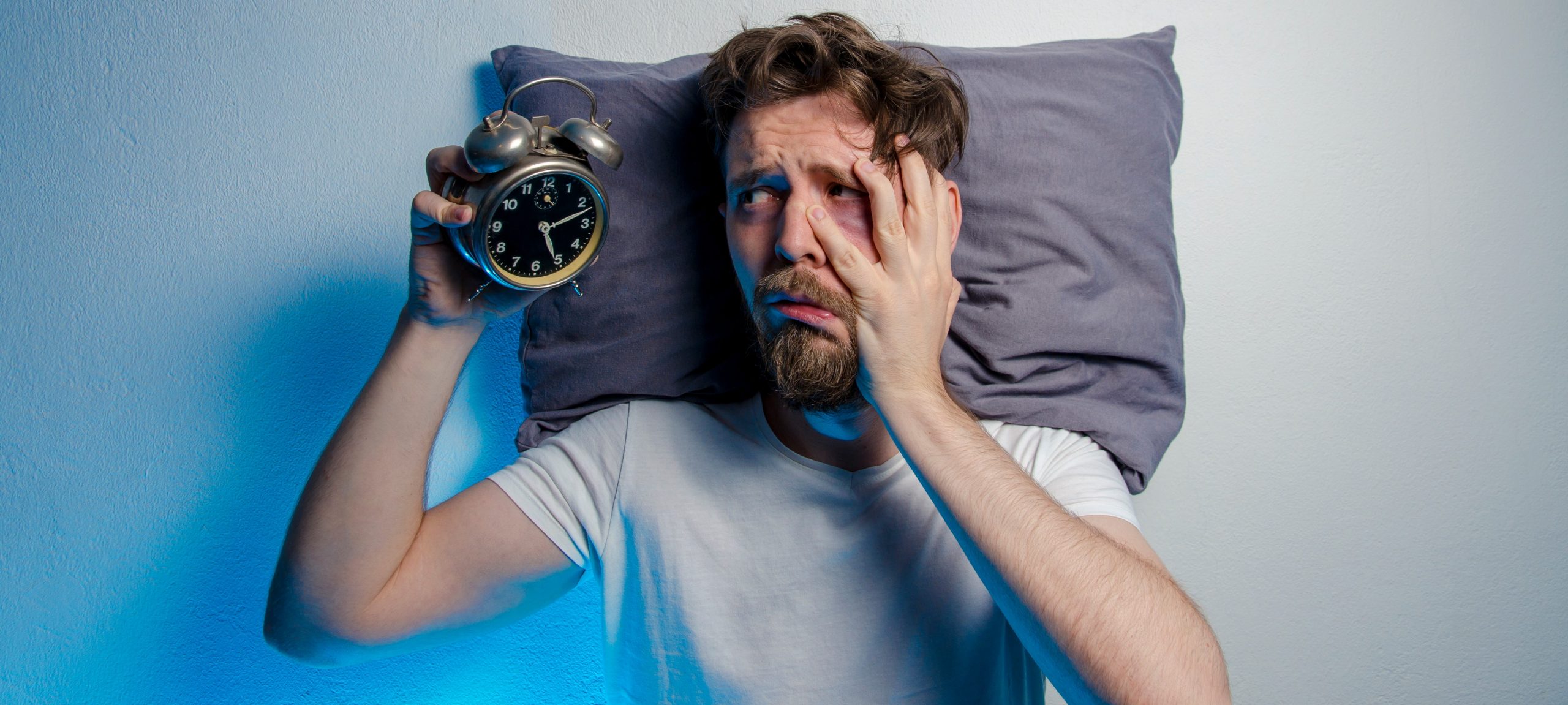Defining Insomnia
Though the term ‘insomnia’ is often used to describe quite a few kinds of disorders in general, as well as in medical literature – usually, insomnia is defined as a disorder where the affected individual reports a difficulty in falling sleep. For example, according to a number of surveys and studies, insomnia gets defined as a positive response to one of the two following questions, “Do you experience difficulty sleeping?” or “Do you have difficulty falling or staying asleep?”
Focusing on the process of sleeping itself, generally insomnia gets used as a term to indicate the presence of polysomnographic evidence of disturbed sleep. Thus, frequent sleep disruptions at nights, the presence of a long sleep latency, staying awake for a prolonged time during the time of sleep, as well as transient arousals at greater frequencies, are all considered as evidence of insomnia. Therefore, insomnia has generally been considered both as a symptom and as a sign. Here, the term ‘insomnia’ is used in describing disorder with the following diagnosis or treatment advice:
- Difficulty falling asleep, staying asleep or sleep that is deemed nonrestorative
- The presence of this difficulty despite adequate opportunities and circumstances of sleeping
- The inability to sleep associated with daytime impairment or distress
- An occurrence of such sleep difficulty, at least 3 times per week and which has been a regular problem for at least 1 month
What then, can we consider worthy to be called a disorder? A condition associated with negative consequences is considered to be a disorder, and significantly, these consequences are the results of, not a normal condition but rather, some variation of a pathological response. In the present scenario, the consequences leading to insomnia cannot simply be a normal consequence of the loss of sleep.
The Causes of Insomnia Prevalence
A prevalent, or ongoing case of insomnia is estimated to depend on the criteria used to define insomnia, and more specifically, with the population being studied. A general consensus has developed from population-based studies that approximately 30% of a variety of adults under study drawn from different countries report one or more of the symptoms of insomnia – namely, difficulty initiating sleep, difficulty maintaining sleep, waking up too early, and in some cases, a permanently degraded or poor quality of sleep. Conclusions drawn from various reports indicate that the addition of a diagnostic requirement that includes clearly observed daytime impairment or distress as a function of the insomnia symptoms, results in approximately 10% prevalence of insomnia. Finally, it is seen that applying a more focused diagnostic criteria, such as the Diagnostic and Statistical Manual of Mental Disorders, which includes the additional requirements that insomnia symptoms persist for at least one month and do not exclusively occur in the presence of another sleep disorder, mental disorder, or the direct physiological effects of a substance or medical condition, yields an estimated prevalence of approximately 6%.
Among several well-identified risk factors for insomnia, age and gender are the most clearly identified demographic risk factors, with an increased prevalence in women and older adults. While the cause of this increased risk in the elderly is not well defined, it may well be due to the partial decline in functionality of internal systems in control of sleep that may contribute to insomnia in this older population. Importantly, the presence of coexisting medical conditions is also a significant factor for the increased prevalence of insomnia in the elderly. Additionally, in women, insomnia is more prevalent with both the onset of menses and menopause. Accompanying medical disorders, psychiatric disorders, working nights and rotating shifts, all contribute as significant risks for the onset of insomnia.
It is important to recognize that each of these factors alone do not cause insomnia, but rather act as steady additives towards insomnia in individuals predisposed to this disorder. In fact, chronic illnesses are a significant risk for insomnia. It is observed that the majority of people with insomnia (approximately 75%–90%) have an increased risk for additional medical disorders, such as conditions causing hypoxemia and dyspnea, gastroesophageal reflux disease, pain conditions, and neurodegenerative diseases.
Importantly, a variety of primary sleep disorders as well as circadian rhythm disorders are frequently found to coexist with and often leading to insomnia. Among the primary sleep disorders, restless legs syndrome (RLS), periodic limb movement disorders (PLMD), and sleep-related breathing disorders (snoring, dyspnea, sleep apnea) are often present with an insomnia symptom. This has a greater impact among the elderly. For younger individuals, difficulty falling asleep is often associated with a phase delay syndrome. However, in the elderly, phase advance syndrome results in gradual development of difficulty initiating sleep, maintaining sleep, and experiencing early morning awakenings.
The most common coexisting medical conditions associated with insomnia are psychiatric disorders. It has been estimated through studies that 40% of all insomnia patients have a coexisting psychiatric condition. Within these psychiatric disorders, depression is the most common, and insomnia is a diagnostic symptom for depressive and anxiety disorders.
Repercussions of Insomnia on Health
Due to its chronic nature, insomnia is commonly associated with substantial impairments in an individual’s quality of life. In several studies, insomniacs reported decreased quality of life on literally all domains of the Short Form Health Survey of the Medical Outcomes Study (SF-36) which consists of a total of 36 items, and broadly focuses on 8 domains:
- Physical functioning
- Role limitation due to physical health problems (role physical)
- Bodily pain
- General health perceptions
- Vitality
- Social functioning
- Role limitations due to emotional health problems (role emotional)
- Mental health
A study has compared SF-36 results in groups of insomnia patients with mild to severe insomnia symptoms, to that with groups of patients diagnosed with depression or congestive heart failure. Severe insomnia patients were reported to have had numerically greater loss of function than patients with congestive heart failure in pain, emotional effects, and mental health effects, recorded clinically. Additionally, insomnia patients also reported more physical problems than patients with depression.
Research has revealed that among the consequences of insomnia observed during the daytime, the increased occurrence of accidents poses the greatest health risk. Insomniacs are 2 to 4 times more likely to have an accident. A study comprising of tens of thousands of community respondents, has reported that 8% of insomniacs and 1% of non-insomniacs have experienced an industrial accident in the past year. The efficiency of work is also compromised among insomniacs due to work-related problems, such as higher rates of work absence, decreased concentration, and difficulty performing duties.
Further studies show that individuals reporting an ongoing sleep problem were more likely than good sleepers to have decreased job performance and to have been absent from work in the last month due to health problems. An evaluation of insomnia in a staff-centered health maintenance organization – after considering age, gender, and chronic disease, as well as days of restricted activity due to illness and days spent in bed – were found to be about twice as common among insomniacs compared with non-insomniacs. Additionally, mean total health care expenditures were 60% higher in the insomnia group relative to the unaffected, healthy individuals.
Open-ended public surveys, as well as clinic-based observation studies have demonstrated a high rate of psychiatric disorders coexisting in patients with chronic insomnia. In fact, insomnia is more frequently associated with psychiatric disorders than any other medical illness. In an epidemiologic study, 40% of insomniacs had a coexisting psychiatric disorder when compared with 16.4% of those with no sleep irregularities. Additionally, depression and anxiety were found to be the most common psychiatric disorders accompanying insomnia patients. Conventionally, it has been assumed that insomnia is secondary to such psychiatric disorders; but in actuality, due to the chronic nature of insomnia, it is possible that in some, if not most, cases the insomnia precedes the psychiatric disorder.
In fact, it is possible that insomnia represents a significant risk for the development of a gradual psychiatric disorder in the future. In a large-scale population-based study, it was found that insomnia more often preceded rather than followed the recorded cases of a mood disorder. This effect is even more pronounced for relapses of the mood disorder, where insomnia symptoms preceded symptoms of a mood disorder relapse for more than 56% of the cases. In contrast, for chronic insomnia patients with a coexisting anxiety disorder, the first occurrence of anxiety or a relapse preceded insomnia in most of the cases.
Understanding the relation between sleep and psychiatric disorders has led several extensive studies towards examining the evolution of psychiatric disorders in insomnia patients. These studies have used follow-up periods ranging from 1 to 40 years, with the majority using a 1 to 3-year follow-up period. In all of these studies, insomnia has been found to be posing a substantial risk for the development of a depressive disorder. Typically, the relative risk has been approximately 5 (in a range between 2 and 40), and in all cases it was found to be statistically significant.
While some studies also reported an increased risk for anxiety or drug abuse, neither of these was consistently found, for concluding something concrete. Finally, studies conducted in subjects with affective disorders showed that depressed patients who experience improvements in sleep have also experienced a more rapid antidepressant response; while those patients whose insomnia persisted, had a short time to relapse. What is clearly needed are clinical trials to assess the impact of insomnia therapy on incidence of depression as well as the time to relapse in depressed patients who are in remission.
The Verdict on Insomnia
A great question posits itself, as to whether insomnia causes depression, vice versa, or both. The close association of insomnia with depression is likely related to common underlying psychosomatic as well as pathophysiological mechanisms for sleep and mood regulation that make the individual vulnerable to both conditions. Data have shown that both the diagnosis of insomnia and the severity of the sleep disturbance are related to overactivation of the hypothalamic-pituitary-adrenal axis and the hypersecretion of cortisol. Recent evidence suggests that there may be some neuroendocrine and clinical similarities between insomnia and depression. A dysregulation in Corticotropin-releasing factor has been implied to be a driving factor in the pathogenesis of psychiatric disorders such as depression as well as in the mediation of hyperarousal seen in primary insomnia. This abnormality might represent the common risk factor, and therefore, it is quite possible that both disorders would respond to the same therapeutic intervention. For example, corticotropin releasing hormone antagonists.




